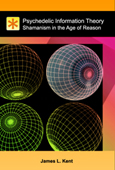
References
Entrainment (Physics)
WikiPedia.org; Internet Reference, 2009.
Entrainment is the process whereby two interacting oscillating systems, which have different periods when they function independently, assume the same period. The two oscillators may fall into synchrony, but other phase relationships are also possible.
The system with the greater frequency slows down, and the other accelerates. Christian Huygens, a notable physicist, coined the term entrainment after he noticed, in 1666, that two pendulum clocks had moved into the same swinging rhythm, and subsequent experiments duplicated this process. Notably, the two pendula stabilized not in synchrony, but in antiphase. They satisfy the definition of entrainment because they have the same period, even though they have opposite phase. The accepted explanation for this is that small amounts of energy are transferred between the two systems when they are out of phase in such a way as to produce negative feedback. As they assume a more stable phase relationship, the amounts of energy gradually reduce to zero. In the realm of physics, entrainment appears to be related to resonance.
In the study of chronobiology, entrainment occurs when rhythmic physiological or behavioral events match their period to an environmental oscillation (termed a zeitgeber, which is German for "timegiver"). The activity/rest (sleep) cycle is only one set of such events that is normally entrained by environmental cues whose period is ultimately determined by the earth's rotation. The term entrainment is justified because the biological rhythms are endogenous: they persist when the organism is isolated from periodic environmental cues. Circadian oscillations occur even in isolated organs, and it is believed that a master pacemaker in the mammalian brain, the SCN (suprachiasmatic nuclei), entrains the periphery. Such hierarchical relationships are not the only ones possible: two or more oscillators may couple in order to assume the same period without either being dominant over the other(s). This situation is analogous to Huygens' pendulum clocks.
When good sleep hygiene is insufficient, a person's lack of synchronization to night and day can have health consequences. There is significant variation within normal chronotypes' entrainment; it is normal for humans to awaken anywhere from about 5 a.m. to 9 a.m. However, patients with DSPS, ASPS and Non-24 hour sleep phase syndrome are improperly entrained to light/dark.
A similar phenomenon was characterized in hearing aids when the adaptive feedback cancellation is used. This chaotic artifact (entrainment) is observed when correlated input signals are presented to an adaptive feedback canceller.
Web Resource: en.wikipedia.org
Keywords: entrainment, resonance, oscillators
|
This reference is included in the following Listings: |
